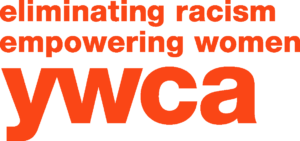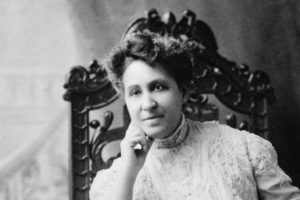This Women’s History Month blog post was written by Natalie Cone, Manager of State Advocacy and Civic Engagement at the YWCA.

The organizing efforts of women in civic engagement have shaped and strengthened our democracy. From the suffragettes who fought for the passage of the 19th Amendment 101 years ago to Fannie Lou Hamer and Ella Baker who fought for civil and voting rights in the 1960s to the diverse and principled women who comprise the 116th Congress, women have played critical roles in bending the arc of the universe towards justice. At the beginning of Women’s History Month, it’s important for all of us who work in civic engagement to critically reflect on these contributions and think intentionally about our own work in engaging women’s issues as we work towards strengthening our democracy, representation, and access to the polls. While the aforementioned milestones of women’s history warrant praise, there are a few lessons from that history that deserve our heightened attention.
First, it is vital to be aware of who is and who isn’t at the table. The journey to the 19th Amendment was long and challenging, spanning seven decades. The victory came from the tireless efforts of suffragettes who were committed and strategic—and who left out women of color in the interest of political expediency and white supremacy. One of the most famous moments in the fight for women’s right to vote, the Seneca Falls convention in 1848, only included white women, inspiring Sojourner Truth to later claim “Ain’t I A Woman.” During the Women’s Suffrage Parade in Washington, DC in 1913, Black women were told to march as a delegation in the back (Ida B. Wells-Barnett famously refused, definitely marching with her own Illinois delegation). It was through the ongoing advocacy of Black women like Wells-Barnett, YWCA’s Mary Jackson and Addie Waites Hudson, and the founder of the National Association of Colored Women (NACW), Mary Church Terrell, that forced the movement to be more inclusive of Black women. It’s a meaningful lesson about inclusivity and being aware of who we’re centering and bringing to the table.
YWCA works to intentionally center the experience of women and girls of color, working to change our history as an organization that started with segregated YWCAs (with white associations making decisions on behalf of Black branches) to an organization that not only integrated nationally but intentionally adopted One Imperative focused on eliminating racism: “To thrust our collective power towards the elimination of racism, where it exists and by any means necessary.” YWCA’s mission today, working towards eliminating racism and empowering women, recognizes the reality of overlapping and intersecting identities, and that there cannot be gender justice without racial justice and vice versa. As organizations that engage in social justice work, it is important that we confront our history and not only be inclusive but also work towards repairing the historical harm done.
Second, once we recognize who is not at the table, it’s important to not only invite them to the table but to also create space to let those individuals speak for and represent themselves. As civil rights leader Ella Baker would often say, “Give light and people will find a way.” In 1960, she gathered a group that often did not have a seat at the table: youth, specifically Black youth. She organized a meeting for student activists, many of whom were leaders in the sit-in movement, to come together at Shaw University to discuss their strategy and approach. This meeting would ultimately influence the creation of the Student Non-Violent Coordinating Committee (SNCC). And while Baker provided guidance, support, tools, and resources, she let the students decide on their approach to their own advocacy. These students, including many young women like Diane Nash and Roberta Yancy (a former campus organizer for YWCA), went on to help change civic engagement in the rural south by risking their lives to create freedom schools and register voters. This is an important lesson on the change and creative ideas that emerge when we invite others to the table and empower them to lead instead of speaking for them.

Finally, civic engagement efforts must acknowledge progress while still fighting barriers. The election of 1920 following the passage of the 19th Amendment was the first opportunity to see the impact of this change. Would women take advantage of this newly established right? Would they turn out to vote? Overall, the results were underwhelming, with very few women—36% compared to men’s 68%—actually turning out to vote. There were a few states, however, that had a higher turnout of women, and this provided valuable lessons on identifying the barriers and challenges to getting women to vote.
Looking to our present moment, women consistently turn out to vote in higher numbers than men, especially Black women who consistently are the most loyal voters in the Democratic party. Not only that, we have more women than ever running for and getting elected to office. The 116th Congress is the most diverse in U.S. history, with a record 131 women currently serving in the House and Senate. But just because we see progress does not mean barriers don’t exist. Voters—particularly people of color, low-income people, the elderly, and young people—still face discriminatory voter ID laws, intimidation at the polls, targeted closing of polling locations, and disenfranchisement, among many other challenges to voting.
As we move forward, it is important that we take to heart the vigilance of the Black suffragettes, the inclusiveness of leaders like Ella Baker, and the boldness of the women of the 116th Congress, and ultimately look intentionally and critically at the past for lessons to strengthen our civic engagement in the future.




